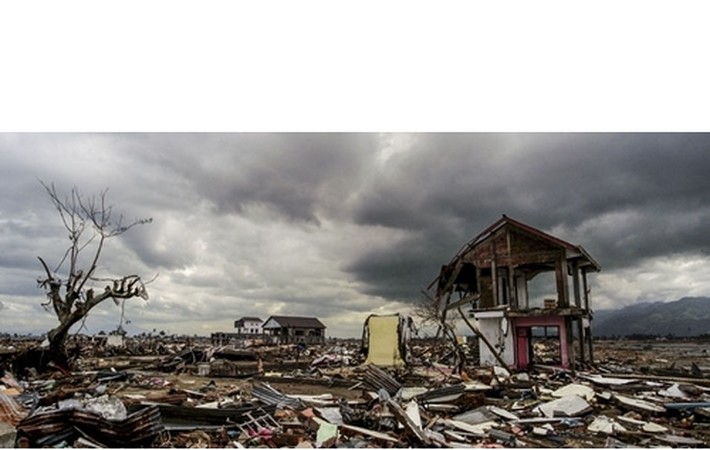
Published on 11/16/2016 | Use Cases
As India is actively pursuing Digital India and Smart Cities powered by the latest communications technologies like Internet of Things (IoT) and 4G/LTE, it would be meaningful to discuss how it can be utilized to improve disaster management in the country.
India, the second largest country in the world in terms of population, has been facing huge challenges in delivering infrastructure for disaster management. The Uttarakhand floods 2013, the Mumbai terrorist attack 2011, and the Kerala temple fire 2016 are just a few instances that show how we fail to cope up with disasters. The Internet of Things (IoT), perceived as the intelligent network connecting millions of devices at a time, brings a ray of hope in this regard.
When discussing disaster management, there are a few processes that form the links in the chain and work in tandem to complete the emergency management lifecycle. The process starts with identification of risks, disaster preparedness, emergency response, resources allocation, reaction planning, and lastly disaster recovery. Fortunately, IoT has the solution to help the disaster management agencies at every stage of the process.
IoT devices typically use embedded technology that can run using low-energy communications standards like Bluetooth. A typical IoT network consists of a telecom network – usually powered by LTE/LTE-A, the Internet gateways, the IoT software platform, and the edge devices. The entire ecosystem of network providers, device vendors, platform providers, application providers and end users work in tandem to deliver the intelligent network enabling millions of residential and industrial applications.
A recent whitepaper released by Digital India Action Group (DIAG), a think tank established for ideating and monitoring policy initiatives to support the Indian Government’s mission of Digital India, set up by Manufacturers’ Association of Information Technology(MAIT), revealed that 57 percent land area of India is vulnerable to earthquakes; 68 percent land is vulnerable to drought; 12 percent land is vulnerable to floods; 8 percent land is vulnerable to cyclones; and many cities in India are also vulnerable to chemical, industrial and other man-made disasters.
IoT, according to MAIT, can play a major role in dealing with emergency by providing early warning signs through sensors and enabling faster coordination among the stakeholders through effective communications. It is found that cities with intelligent communications network surpass others in terms of their ability to manage crises. Smart cities with traffic control systems, video surveillance capabilities, emergency alerts systems, higher Internet/mobile penetration and smart meters for utilities always excel in terms of disaster resilience, disaster management and resource allocation.
By 2020, over 50 billion devices are expected to be connected via IoT, and IoT technology industry is expected to grow as much as $6.2 trillion by 2025. A major credit for this growth is attributed to the latest technological developments enabling effective communication across the networks in a cost-efficient way. Social media, Mobility, Analytics and Cloud (SMAC), for example, has played a major role in consumerizing IT across several industries. Now it’s the turn of these technologies to help build a robust IoT ecosystem while also offering scope for future growth.
Social media has engrossed our digital life so much so that we are able to live-stream videos from the road, a trapped enclosure or a movie theatre to thousands of your friends in real time. The potential of these tools in terms of disaster management, therefore, is endless. Mobility, the buzzword of today’s digital era, is the pillar of all communications, especially in applications like disaster management. Telecom and Internet service providers play a lead role by providing the communications network that acts as the nervous system of the IoT ecosystem. Big data analytics, on the other hand, helps in delivering real-time analysis of critical data and utilizing them for real-world use cases or future research. Cloud addresses the storage concern associated with IoT, enabling participating firms to launch their IoT applications in cloud without worrying about the underlying IT infrastructure and associated costs.
For India, the biggest challenge ahead of IoT deployment is the communications infrastructure. Indian telecom industry, dominated by private players, is lagging behind in infra investment compared to China, whose investments are primarily realized through government funds. The challenging demographics and lack of favorable policies makes investment a highly risky affair for private telcos. The slow 4G momentum and the rescheduling of National Optic Fiber Network (NOFN) project are a few examples which show infrastructure hurdles play the villain in the country’s progress.
While the developed countries have started consultation and trials on 5G, Indian telecom authorities has not initiated any talks on this. Spectrum allocation is another conundrum facing the authorities. The hue and cry over the higher spectrum costs has to be looked upon. The ongoing debates over Right of Way (RoW) challenges need to be addressed. Unless the government addresses these concerns of the industry, the transition to 5G, the backbone of IoT, will be close to impossible.
Another issue with IoT is the standardization. The disparate IoT networks which interlink different communications protocols, as well as multiple device types, OSs and applications make standardization extremely challenging. Worldwide consultation has started on devising formal standards, but India has not shown any interest so far. Security, especially the challenges arising from sharing the data across public cloud networks, also needs to be addressed.
As India eyes the next round of digital evolution by 2017, the time is appropriate for the country to boost investment in IoT in order to leverage its benefits to address some of the pressing problems it is facing.
This article was originally posted on LinkedIn.